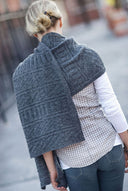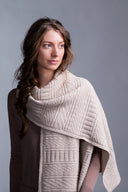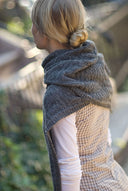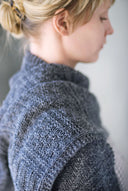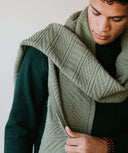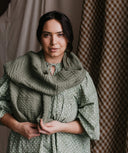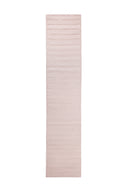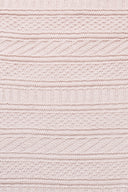Guernsey Wrap
Pattern Specs
CONSTRUCTION
- Wrap is worked flat from end to end.
GAUGE
- DK Version: 20 stitches & 32 rows = 4″ in textured pattern, after stretch-blocking
- Worsted Version: 14 stitches & 24 rows = 4″ in textured pattern, after stretch-blocking
NEEDLES
DK Version
- One pair of straight needles or a 32″ circular needle* in size needed to obtain gauge listed
- Suggested needle size: 4 mm (US 6)
Worsted Version
- One pair of straight needles or a 32″ circular needle* in size needed to obtain gauge listed
- Suggested needle size: 5 mm (US 8)
*Knitter’s preferred style of needle may be used
FINISHED DIMENSIONS
- DK Version 16½” [42 cm] x 77 ½” [197 cm] rectangle
- Worsted Version 16½” [42 cm] x 77 ¼” [197 cm] rectangle
- Measurements taken from relaxed fabric after stretch-blocking.
Please note: the stitch patterns in this garment are charted only.
Pattern Materials
YARDAGE
- DK Version: approximately 1160 total yards of DK weight yarn
- Worsted Version: approximately 630 yards of worsted weight wool yarn
YARN
DK Weight Version
- 8 skeins of Brooklyn Tweed Arbor (100% American Targhee Wool; 145 yards per 50 grams) —OR—
- 9 skeins of Brooklyn Tweed Re•Ply Rambouillet (100% American Rambouillet Wool; 130 yards/119 meters per 45 grams)
- Photographed in Re•Ply Rambouillet Prickly Pear and Arbor Degas
Worsted Weight Version
- 5 skeins of Brooklyn Tweed Shelter (100% American Targhee-Columbia Wool; 140 yards per 50 grams)
- Photographed in Shelter Soot
Techniques
Tutorials for all special techniques listed below are included in the pattern:
- Sewn Bind Off (Elizabeth Zimmermann’s Method)
Errata
1 September 2023: GERMAN VERSION
Auf Seite 6 sollten die Anweisungen unter „Hauptstoff“ lauten:
„1. - 78. Reihe von Strickschrift A zwei Mal stricken. [...]
Nun stricken Sie die 1. - 58. Reihe von Strickschrift A noch einmal.
Stricken Sie die 1. - 24. Reihe von Strickschrift B einmal.
Stricken Sie die 21. - 78. Reihe von Strickschrift C einmal.
Anschließend stricken Sie die 1. - 58. Reihe von Strickschrift C zweimal."
19 October 2016: Version 2.0
The pattern was regauged to work with Arbor yarn, and new imagery of the sample in Arbor was added.
28 October 2011: (Version 1.0):
Sequencing of Chart C instructions were edited to create a perfect mirror image of each side. Namely, the pattern repeats should be:
Rows X-X (as listed) of Chart A two times,
Rows X-X of Chart A once more,
Rows X-X of Chart B once,
Rows X-X of Chart C once,
Rows X-X of Chart C two times.
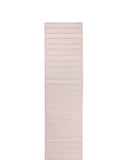
Guernsey Wrap
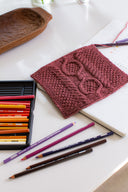
Uncompromising Excellence in Every Detail



